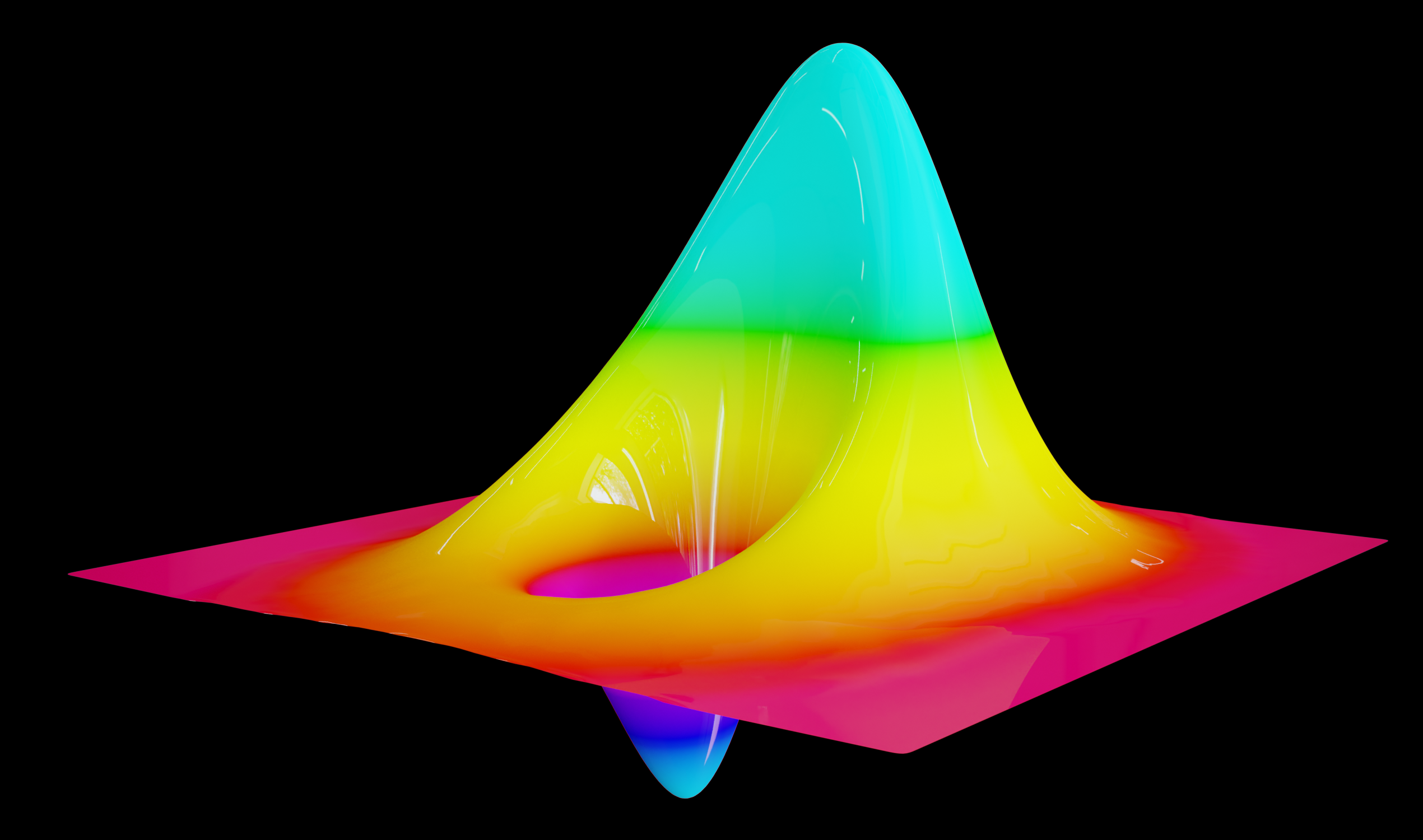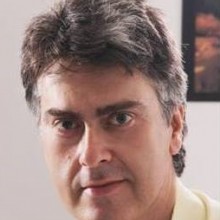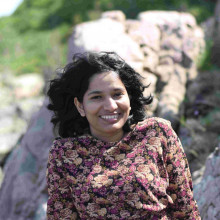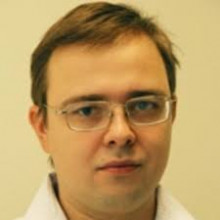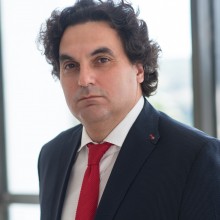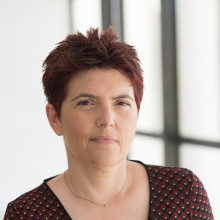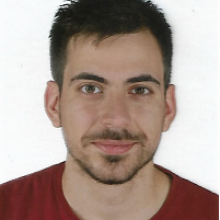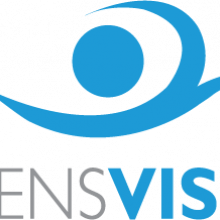To: 04/09/2024 14:00
Metal-halide perovskite materials demonstrated extraordinary performance in solar cells and light emission in recent years, and their layered low-dimensional counterparts promise even greater tunability due to the huge variety of molecules available for the organic phase. Single octahedra-layer structures act as two-dimensional quantum wells, showing strong quantum confinement and large exciton binding energies. The band gap and light emission can be designed by the choice of the organic cations.
In this talk I will discuss our recent results on the emission tuning via choice of the organic cations, and the exciton phonon coupling, with a focus on angle-resolved polarized Raman and photoluminescence spectroscopy to get insights into the directionality of phonons and emission polarization.

An article by an international team including George D. Tsibidis (Research Associate at IESL-FORTH)
and Emmanuel Stratakis (Research Director at IESL-FORTH) appears in the inside front cover of
Advanced Optical Materials (Vol: 12, Issue 20: Page: 2400172 (2024))
Education
- Ph.D. in Atomic & Molecular Physics, University Of Crete, Herakleion – Greece
- M.Sc. in Advanved Theoretical physics, University Of Crete, Herakleion – Greece
- B.Sc. in Physics, University Of Crete, Herakleion – Greece
Interests
- Atomic & Molecular Dynamics
- Quantum Optics in strong–field physics
- Photon counting
- Photon statistics
- Quantum Information
- Nonlinear Phenomena
- Attosecond Physics
Position Description
Ο επιλαχών μεταδιδακτορικός συνεργάτης θα απασχοληθεί με την ανάπτυξη και τον χαρακτηρισμό καταλυτικών και ηλεκτροκαταλυτικών υλικών
Required Qualifications
- Πτυχίο Υλικών, Φυσικής, Χημείας
- Μεταπτυχιακό στην Επιστήμη Υλικών
- Διδακτορικό Δίπλωμα στην Επιστήμη Υλικών
Desirable Qualifications
- Εργαστηριακή Εμπειρία
- Eμπειρία στην ανάπτυξη υλικών
- Eμπειρία στον χαρακτηρισμό υλικών
Application Procedure
Interested candidates who meet the aforementioned requirements are kindly asked to submit theirapplications to the address (hr@iesl.forth.gr), with cc to the Scientific Responsible, Prof. V. Binas (binas@iesl.forth.gr).
In order to be considered, the application must include:
- Application Form (Form Greek or Form English to the left)
- Detailed curriculum vitae (CV) of the candidate
- Scanned Copies of academic titles
Appointment Duration
12Position Description
Τhe PhD candidate will be involved in the assessment and analysis of experimental data generated during the fabrication and by the characterization of devices and structures based oxide dielectrics.
Related Project
AIMS 5.0 -Required Qualifications
- Diploma in Electrical and Computer Engineering
- PhD candidate in a School/ Department of Electrical and Computer Engineering with relative subject
- Good understanding of the operation principles of microelectronic devices
- Experience in oxide dielectrics
Desirable Qualifications
- Experience with the cleanroom fabrication processes
- Experience with electrical characterization techniques
- Programming skills
Application Procedure
In order to be considered, the application must include:
- Application Form (Form Greek or Form English to the left)
- Brief CV
- Scanned copies of academic titles
- Certificate of enrollment in a PhD program
Please send your application and all documents to: hr@iesl.forth.gr and cc the Scientific supervisor marked in the left column
Appointment Duration
15Funding

Activity Overview:
The research activity is based on our recent breakthrough achievements where the process of high harmonic generation induced by intense laser-matter interactions has been used for the generation of coherent state superpositions (optical Schrodinger "cat" states) and massively entangled light states ranging from the far-IR to extreme-ultraviolet(XUV) [Nature Phys. 17, 1104 (2021); PRA, 105, 033714 (2022); PRL, 128, 123603 (2022); PRX Quantum 4, 010201 (2023), Rep. Prog. Phys. 86, 094401 (2023), PRL 132, 143603 (2024), J. Phys. B: At. Mol. Opt. Phys. 58 132001 (2025)].
The activity focuses on the development of new schemes for the generation of a new class of novel non-classical light states that will be used for novel investigations in quantum technology. In particular, it targets on the implementation of quantum operations (e.g. Sci. Rep., 6, 32821 (2016), Nature Comms, 8, 15170 (2017), PRL, 122, 193602 (2019), PRA 112, 013110 (2025)) in a variety of intense laser-matter interactions (atoms, molecules, solids) (PRB 109, 035203 (2024), Book in Word Scientific (2024), PRA, 109, 033706 (2024), Nat. Commun. 16,1428 (2025)) for the generation of controllable high photon number non-classical (e.g. optical "cat" and squeezed light states) of “massively” entangled coherent light state superpositions, for applications in quantum technologies, including non-linear quantum optics (PRL 134, 013601 (2025)), quantum metrology/sensing, quantum communication and quantum information processing.
External collaborators:
1) Maciej Lewentsein (ICFO, Barcelona, Spain)
2) M. F. Ciappina (Technion, Guangdong, China & Haifa, Israel)
3) E. Pisanty (King's College, London, UK)
4) ELI-ALPS, Szeged, Hungary
5) Misha Ivanov (MBI, Berlin, Germany)
6) J. Biegert (ICFO, Barcelona, Spain)

Education
- 2015-2020: B.Sc. Physics, Humboldt Universtität zu Berlin
- 2022-2023: M.Sc. in Quantum Science and Technology, Universitat de Barcelona
Career
- 2024- : PhD Student, IESL, FORTH and University of Crete
Interests
- Quantum optics, quantum information and open quantum systems
- Efficient, stable, and reliable coupling of light inside standard commercial sutures, predominantly used for ophthalmological surgery, and measurement of their optical transparency during perforation in “in-vitro” ocular samples of animals
- Development of a new type of ophthalmological sutures imparted with Bragg grating reflectors for on-line suture strain measurement, for operation during ophthalmological surgery, while emphasizing in cornea surgical operations
- Development of optically sensing sutures to TRL5, while including tests in “in-vitro” ocular samples of animals
- Use of laser radiation for post-surgical tuning of the mechanical properties of perforated sutures, for attempting the correction of refractive distortions in the transplanted cornea
- Investigation of the commercial prospects and techno-medical impact of the optically sensing sutures of PHATHON project in ophthalmic surgery and other sectors of modern surgical practices
Funding

Position Description
Management of funded Research projects in the field of Space and Quantum technologies
Required Qualifications
- Undergraduate degree in Physics or related field
- Master degree in Physics in Optics or material sciences
Desirable Qualifications
- Experience with optical systems
- Good knowledge of English
Application Procedure
Interested candidates who meet the aforementioned requirements are kindly asked to submit their applications, no later than July 20, 2024, 23:59 local Greece time to the address (hr@iesl.forth.gr), with cc to the scientific coordinator, Dr Wolf von Klitzing (wvk@iesl.forth.gr).
In order to be considered, the application must include:
- Application Form (Form Greek or Form English to the left)
- Detailed curriculum vitae (CV) of the candidate
- Scanned Copies of academic titles




